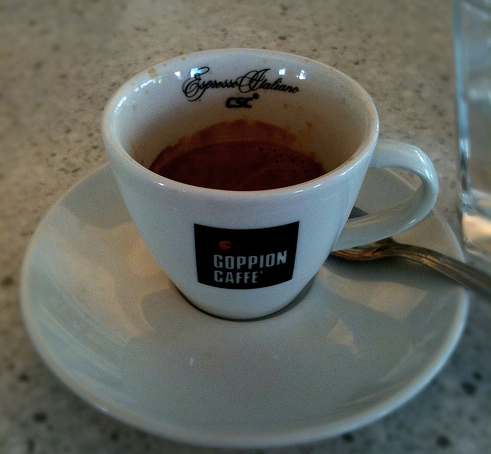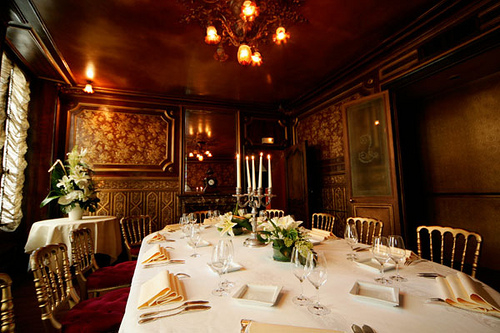Lessons Learned in Italy: Cultural Dining Differences
- SUBSCRIBE
- ALREADY SUBSCRIBED?
BECOME A BONJOUR PARIS MEMBER
Gain full access to our collection of over 5,000 articles and bring the City of Light into your life. Just 60 USD per year.
Find out why you should become a member here.
Sign in
Fill in your credentials below.
 We’re in Venice, where things are different when it comes to restaurants. One of the first things we notice is that Italians love it when Anglos utter even one Italian word, even if mispronounced.
We’re in Venice, where things are different when it comes to restaurants. One of the first things we notice is that Italians love it when Anglos utter even one Italian word, even if mispronounced.
Restaurants keep different hours here: lunch is scheduled much later in the day, dinner much earlier. Maybe this is why stores were open and busy during what was siesta time in the past.
Siestas may be a thing of the past, but expect to linger, as lunch is a leisurely experience. From the start, waiters have no problem returning several times to check to see if you’re ready to order, as opposed to French waiters who tend to punish those pour souls unable to order when the waiter deigns to appear.
We noticed patrons at nearly every table ordered bottled water, understandable considering the condition of local water upon which Venice and surrounding islands sit. We also noted they love eating raw fish that one can only hope formerly swam in other waters.
For starters, based on the condition of snappy fresh vegetables and salad fixings received, produce arrives early in the day and clearly it wasn’t lifted from hothouse commercial boxes packed days before. Olives: they love them and capers, too, big ones served with stems on. Apparently they love pepper, too, because we saw ground pepper being poured into pepper shakers (not frou-frou grinders). Extra Virgin Olive Oil is also on every table.
Carafes of house wine are still offered, which is fine. If you want to make like the locals, have your bubbly with dinner but not before.
One constant disappointment: bread baskets, which remain pathetic except in high-priced places. Don’t believe me? Make the drive from Genoa to Menton and you’ll see what I mean.
French people, take note: at Italian restaurants, children are not only welcomed, they adored by all. Continuing with contrasts to France, men wore suits and ties, women jeans. Women in general seemed openly flirtatious, whether waitress or seatmate on a bus, TV news reporter or member of Berlusconi’s cabinet.
Italians still take pride in cooking and serving items from menus with a regional emphasis. The cooked tripe and liver we tried in Florence and Venice was better than much-touted versions in Caen and Lyon. We found pizza, risotto and occasionally polenta on the menus, of course, even though they’re from the far South of Europe.
Want to deviate from the menu and perhaps swap a pasta or sauce? No problem, suggestions are heard and switches are easily made at your request.
Plates are cleared as you finish and not when everyone has finished eating, a nod to the Los Angeles style of eating. But don’t get the idea you’re being rushed out—make like the Italians and stay for coffee. It’s hard to top Italian coffee, which comes from sources other than their former colonies. They properly roast before preparing it correctly and everything you’ve heard about Italian coffee being the best is absolutely true.
One chef in the kitchen, staff of three front of house, which is the opposite of how French restaurants are operated. So, one can say Italy has both Slow Food and a Slow Food movement.
Photo credits:
Untitled by ©sebrenner
Macchiato ©jonshave

Slow food, indeed….experience an intimate three-course lunch at Lapérouse with your own private group or join a group limited to 6 with a gastronomy expert from Context Travel at your table. Enjoy an in-depth learning experience in the classic French tradition and in a landmark Neoclassical setting while learning about the emergence, evolution and influence of this acclaimed restaurant. Read on for more about “Le Restaurant, A Parisian Invention Walk in Paris” and the many other options available at Context Tours, Paris.
More in Bonjour Paris, Context Travel, culinary travel, cultural differences, dining etiquette, Food Wine, Italy, travel


